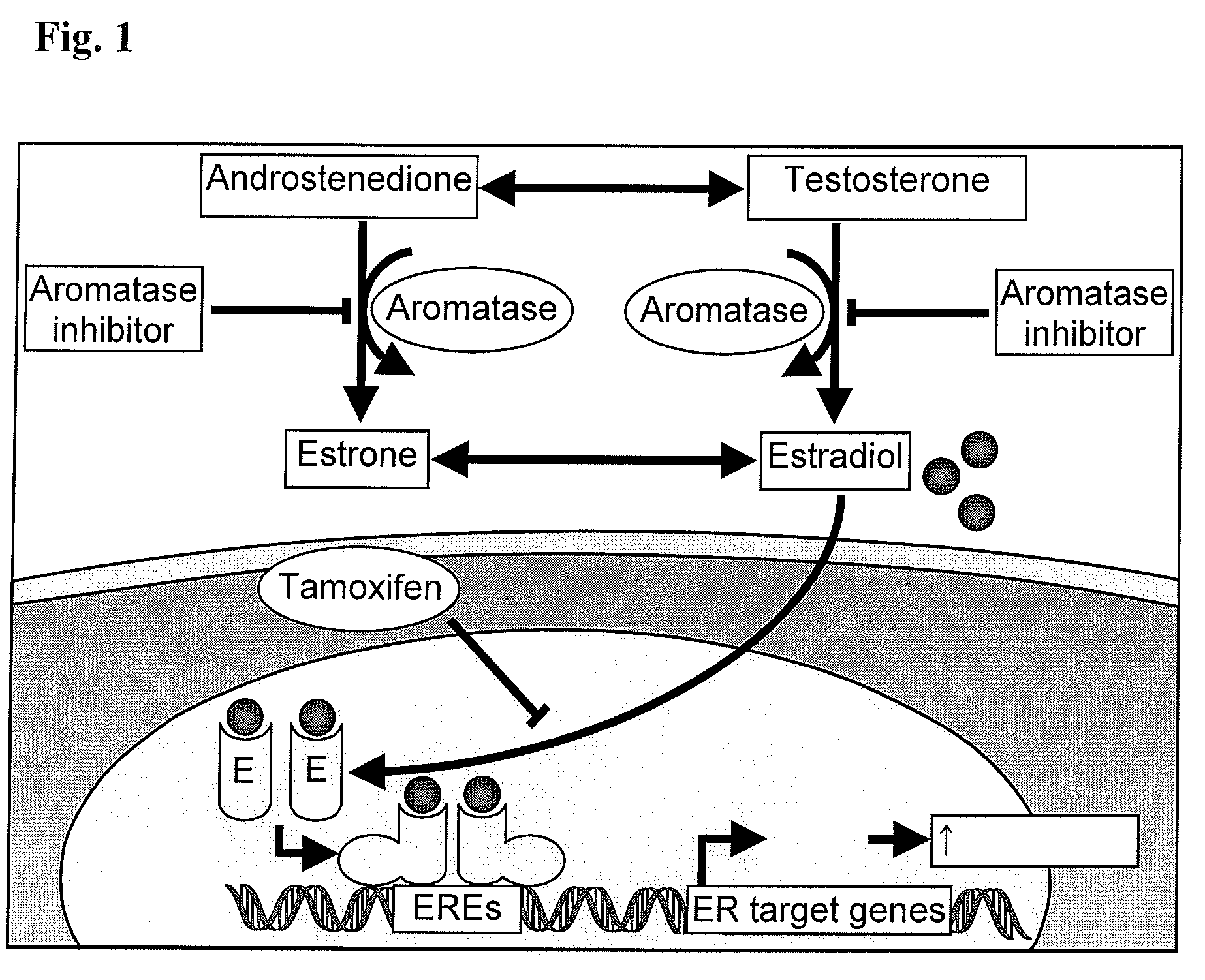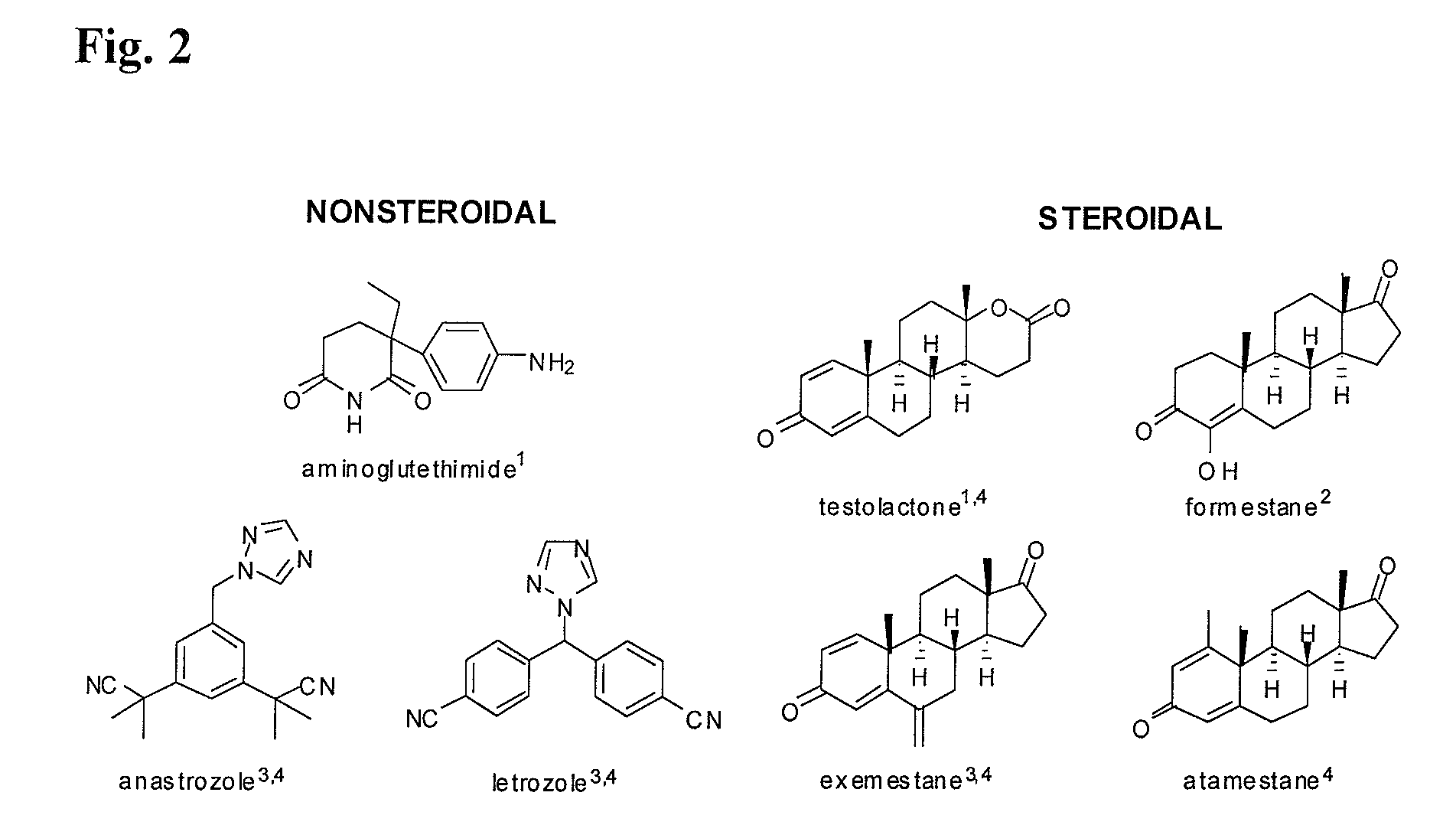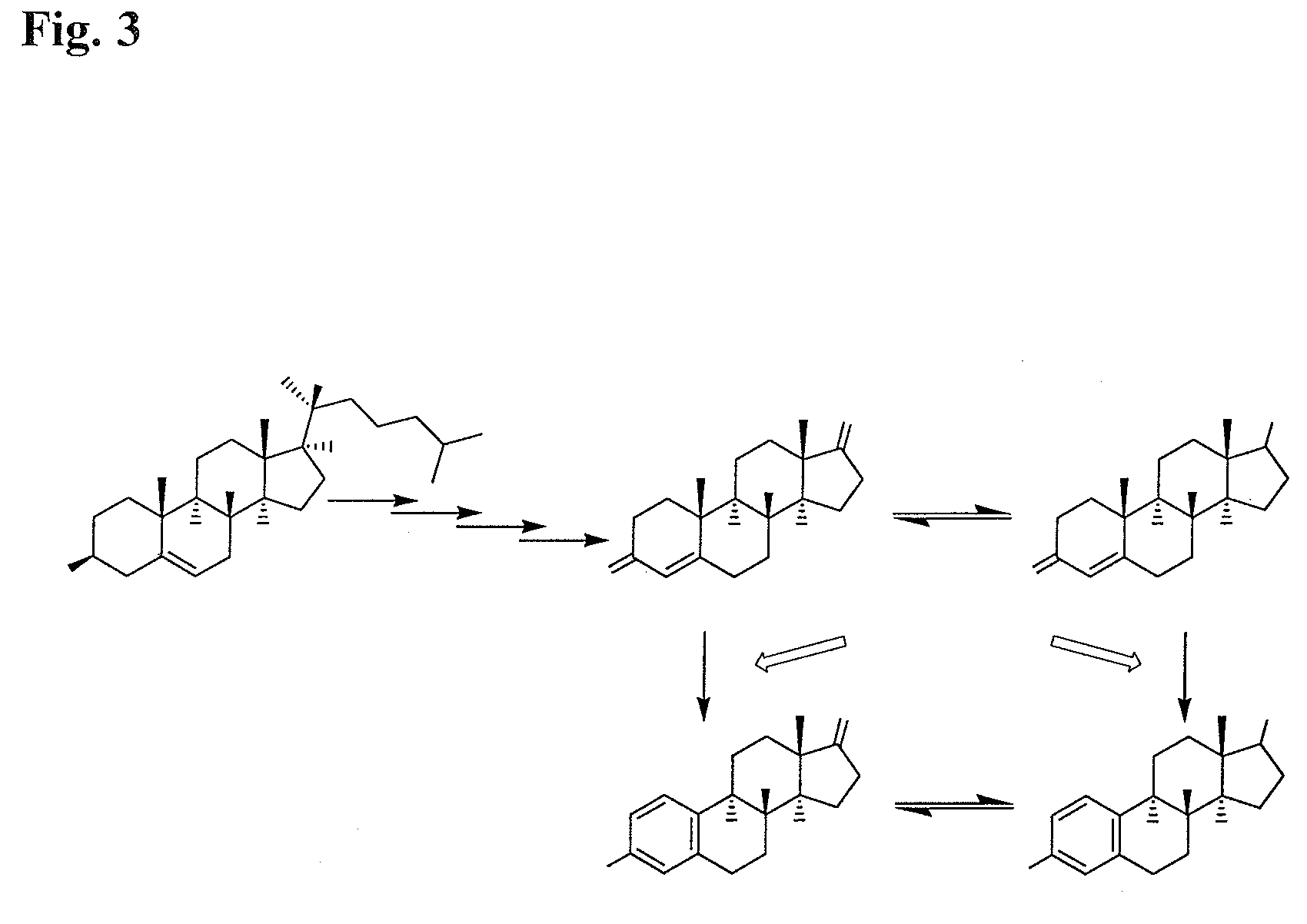Compositions from Garcinia as Aromatase Inhibitors for Breast Cancer Chemoprevention and Chemotherapy
a technology of aromatase inhibitors and compositions, which is applied in the direction of biocide, plant/algae/fungi/lichens, drug compositions, etc., can solve the problems of ineffectiveness, significant side effects, and unsatisfactory side effects of drug therapy, so as to reduce the frequency, duration or severity of a neoplastic disease or condition.
- Summary
- Abstract
- Description
- Claims
- Application Information
AI Technical Summary
Benefits of technology
Problems solved by technology
Method used
Image
Examples
example 1
Definitions
[0115]The term “analog” as in “a compound or synthetic analog thereof”, is intended to include compounds that are structurally similar but not identical to the compound, but retain some or all of the beneficial properties of the compound.
[0116]As used herein the term “anti-cancer activity” or “anti-cancer properties” refers to the inhibition (in part or in whole) or prevention of a cancer as defined herein. Anti-cancer activity includes, e.g., the ability to reduce, prevent, or repair genetic damage, modulate undesired cell proliferation, modulate misregulated cell death, or modulate mechanisms of metastasis (e.g., ability to migrate).
[0117]The term “antioxidants” includes chemical compounds that can absorb an oxygen radical, e.g., ascorbic acid and phenolic compounds.
[0118]The term fruit extract refers to fruits which have been transformed in some manner, for example, pureed, freeze-dried and particularly by modifications resulting from freezing and dehydration resulting...
example 2
General Experimental Procedures
[0127]Methanol and chloroform-soluble extracts of Garcinia mangostana L. (Clusiaceae) (mangosteen) were prepared and individual xanthones were isolated as described in a Jung et al., 2006.
[0128]Melting points were determined on a Thomas-Hoover capillary melting point apparatus and are uncorrected. The UV spectra were obtained with a Beckman DU-7 spectrometer, and the IR spectra were run on an ATI Mattson Genesis Series FT-IR spectrophotometer. NMR spectroscopic data were recorded at room temperature on a Bruker Advance DPX-300 or a DRX-400 MHz spectrometer with tetramethylsilane (TMS) as internal standard. Standard pulse sequences were employed for the measurement of 2D NMR spectra (1H-1H COSY, HMQC, HMBC, and NOESY). Electrospray ionization (ESI) mass spectrometric analysis was performed with a 3-T Finnigan FTMS-2000 Fourier transform mass spectrometer. Column chromatography was carried out with Purasil (230-400 mesh, Whatman, Clifton, N. J.). Analyti...
example 3
Characterization of Samples
[0132]Compounds were isolated from the pericarp of G. mangostana, were evaluated individually in a QR induction assay. The structures of the compounds were identified by physical and spectroscopic data measurement ([α]D23, 1H NMR, 13C NMR, DEPT, 2D NMR, and MS) and by comparing the data obtained with those of published values, as 1,3,7-trihydroxy-2,8-di-(3-methylbut-2-enyl)xanthone (Mahabusarakam et al., 1987), mangostanin (Nilar and Harrison, 2002), and α-mangostin (Sen et al., 1982).
[0133]Compound 21 [1,2-dihydro-1,8,10-trihydroxy-2-(2-hydroxypropan-2-yl)-9-(3-methylbut-2-enyl)furo[3,2-a]xanthen-11-one, with the configurations of C-1″ and C-2″ unresolved], was obtained as yellow powder, and the elemental composition was inferred from a sodiated ion peak at m / z 435.1425 (calcd for C23H24O7Na, 435.1420) in the HRESI-TOF MS. The 1H NMR spectrum of 21 exhibited ortho-coupled signal resonances at δH 7.36 (1H, d, J=8.9 Hz, H-6), and 7.50 (1H, d, J=8.9 Hz, H-5)...
PUM
| Property | Measurement | Unit |
|---|---|---|
| height | aaaaa | aaaaa |
| concentration | aaaaa | aaaaa |
| concentration | aaaaa | aaaaa |
Abstract
Description
Claims
Application Information
 Login to View More
Login to View More - R&D
- Intellectual Property
- Life Sciences
- Materials
- Tech Scout
- Unparalleled Data Quality
- Higher Quality Content
- 60% Fewer Hallucinations
Browse by: Latest US Patents, China's latest patents, Technical Efficacy Thesaurus, Application Domain, Technology Topic, Popular Technical Reports.
© 2025 PatSnap. All rights reserved.Legal|Privacy policy|Modern Slavery Act Transparency Statement|Sitemap|About US| Contact US: help@patsnap.com



